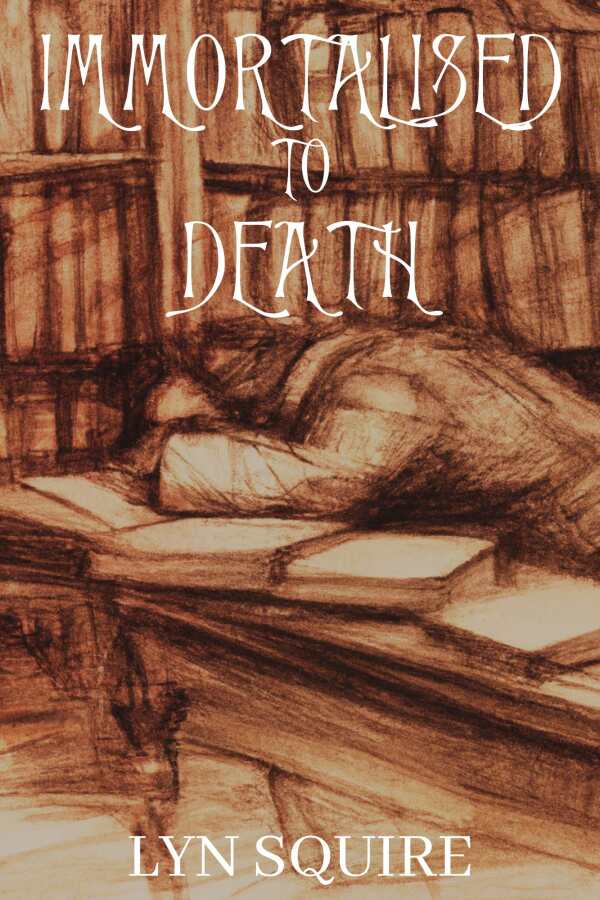Immortalised to Death
Immortalised to Death is a lively mystery novel that delights in the particulars of Charles Dickens’s Victorian England.
In Lyn Squire’s rollicking mystery novel Immortalised to Death, the sudden demise of Charles Dickens is linked to his final, unfinished book, The Mystery of Edwin Drood.
When famed British author Charles Dickens is found slumped over his desk with an unfinished manuscript, his fictional nephew, Dunston, suspects murder by arsenic poisoning. He is inspired (or perhaps manipulated) by Georgina, Dickens’s sister-in-law, to solve his uncle’s murder—in part, by imagining how Dickens intended to conclude his manuscript.
The Dickens family history and the plot and characters of The Mystery of Edwin Drood bring elements of fan fiction and metafiction to Immortalised to Death. They also contribute much to the book’s Victorian settings and characters. Brothels, orphanages, and taverns are juxtaposed to drawing rooms, carriages, and private clubs.
Dunston—a retired, unassuming bookkeeper and a bit of a bumbler—is thrust into the hero’s role. Dependent on servants whose main task seems to be exercising common sense for him, Dunston seems unlikely to solve the problem of how to tie his own shoes, let alone a murder. Still, he assumes control of the investigation, which takes him to places including an opium den. As circumstances dash one theory after another, though, he’s forced to compose new theories, exercising what his uncle described as the one percent of his “silly brain cells” that are “pure gold.” And Dunston’s competence and confidence do indeed expand with exercise.
The writing style imitates Dickens’s, with frequent descriptive embellishments, exuberant wordplay, and rhythmic, alliterative phrasing, as with “postprandial nap” and “semi-somnolent remarks.” These flourishes are great fun. Humor makes similar brief, delightful appearances, as when a chapter opens with the question “Whatever happened to Aunt Catherine’s bosom?” And people engage in clever repartee, delivering surprising revelations.
Instances of physical action complement Dunston’s internal ruminations as the book progresses. Dunston is spun from place to place by whirlwinds of new facts and implications; in the process, secondary characters are caught up in the mystery, too, as when a servant is entrusted with Dickens’s “Progeny Ring” and is mugged. These characters’ voices are distinctive and credible; what they say often reveals who they are—and sometimes even reveals their true identities.
Abrupt developments lead to narrative pauses, though, as when Dickens’s lawyer is relieved that he must claim client confidentiality, thus being spared embarrassment when Dunston comes calling with uncomfortable questions. But when Dunston suggests Dickens had a child out of wedlock, the lawyer does a complete turn—he is now thrilled to dig up evidence and share it. And just when the murder seems to have been solved, a new wrench is thrown into the complex investigative machine, leading to a marked stall before new twists are introduced.
Immortalised to Death is a lively mystery novel that delights in the particulars of Charles Dickens’s Victorian England.
Reviewed by
Michele Sharpe
Disclosure: This article is not an endorsement, but a review. The publisher of this book provided free copies of the book and paid a small fee to have their book reviewed by a professional reviewer. Foreword Reviews and Clarion Reviews make no guarantee that the publisher will receive a positive review. Foreword Magazine, Inc. is disclosing this in accordance with the Federal Trade Commission’s 16 CFR, Part 255.

